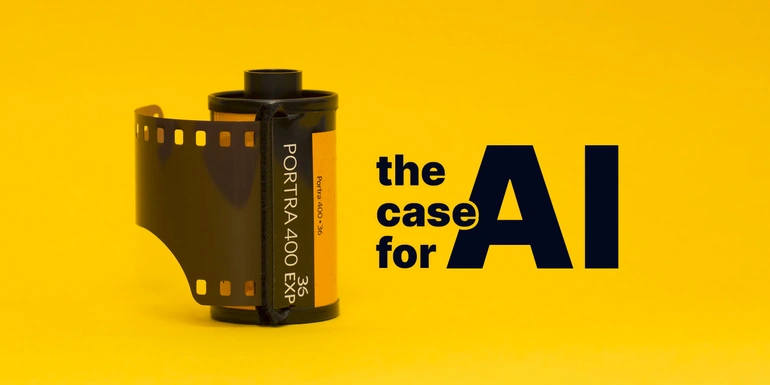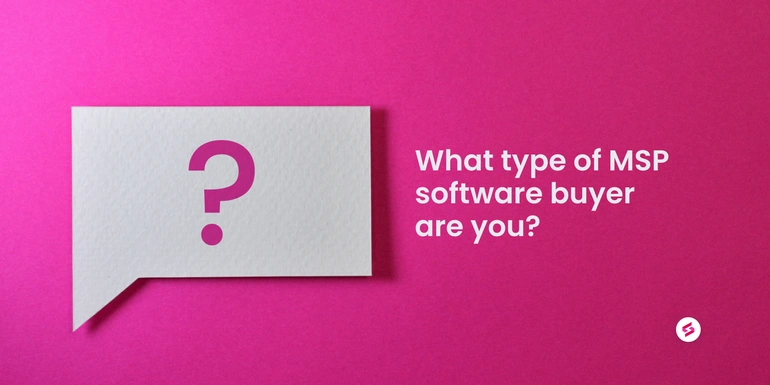All about MSP (Managed Service Provider) Software
The easiest way to build an MSP brand your clients will love is to have the right tools you need to do the job. Here’s the A-Z list of the tools managed service providers need to deliver rich user experiences.
TRY MODERN MSP SOFTWAREManaged Services Providers (MSPs) are responsible for maintaining the IT infrastructure and operations that ensure business continuity in an organization. With a responsibility this critical, MSPs need to be organized, agile, and proactive, which is possible only if their client-side and internal processes are smooth and efficient. This is where MSP software solutions come in.
What are MSP software solutions?
MSP software is a set of solutions that help MSPs effectively deliver managed IT services to their clients by managing both people and processes from business and technical standpoints. The two critical MSP software solutions are Professional Services Automation (PSA) and Remote Monitoring and Management (RMM). Apart from these solutions, an MSP software suite also includes modules for security, such as antivirus software. Administrative solutions such as HR management, payroll, and contract management for part-time and freelance staff are also sometimes considered a part of the MSP software suite.
While several vendors provide these software solutions individually, MSPs can find managing multi-vendor environments unwieldy. Different solutions that are built using different technologies can hamper data flows, leading to data silos and blind spots for MSPs. Each solution comes with its own instruction manual, which means technicians who’ll be using the solutions face a steep learning curve and must contact multiple support teams to get their queries answered. MSPs using fragmented software also run into license renewal hassles since each solution follows a different billing cycle.
MSPs can avoid the above roadblocks by going for an integrated MSP platform. These platforms have PSA, RMM, security, and administrative modules rolled into one, streamlining data flows between various modules, eliminating learning curves, simplifying support, and ironing out payment hassles.
Now, let’s take a look at the critical components of MSP software in greater detail.
Professional Services Automation (PSA)
PSA software solutions handle the business aspect of MSP operations. They include project management, customer management, contract management, customer support, time tracking, invoicing, and auditing and reporting modules.
To better understand PSA, let’s dive into these modules individually.
Project Management
Traditionally, the term project management applies to when a team works together to accomplish a goal within certain constraints. In the world of MSPs, the goal is set by the client and agreed upon by the MSP through SLAs, and the constraints are, both, time and budgetary. Conventional project management tools do not possess capabilities such as assigning tasks to technicians in a way that brings the overall costs down for MSPs (and their clients). On the other hand, Integrated PSA solutions use workflows that perform this cost optimization. They track the progress of projects and billing rates of people on them, removing redundancies wherever required.
Project management tools also include task tracking, which helps managers track the progress of a task by comparing it against a pre-defined, templated checklist and timesheets to assist with billing and invoicing.
Take a look at SuperOps.ai's project management |
Customer Management
We’ve all heard of CRM (Customer Relationship Management) tools that log customers’ progress from the time they enter the sales pipeline. Customer management in PSA is similar to CRM; however, since MSPs provide IT infrastructure services and not a product, the feature set in PSA’s customer management is much more vast. For example, apart from the usual information on customers such as their contact details, they also store details of past bids, contracts, SLAs, and other billing information, which removes the need for investing in a separate tool for the above functions and provides overall visibility during renewals and escalations.
Apart from the above capabilities, a truly integrated PSA solution also includes an inventory of the customer’s IT assets that the MSP manages and a vault to store passwords and other credentials needed to access a customer’s devices. The inventory and vault should themselves be password-protected and hosted in a secure environment to prevent tampering.
Contract Management
Contract management is one of the most crucial aspects of an MSP. For many MSPs, drawing up and managing contracts is a daunting task. A diverse client base makes the whole process even more challenging—since services are tailored for each client, no two clients’ contracts would be the same. Some clients could be on a fixed monthly plan, while others could be on a project basis.
Contract management solutions help MSPs out by automatically generating contracts using templates that follow standard legal and regulatory guardrails. They take into account work orders, billing rates, and overheads to arrive at an invoice, which the MSP can edit and verify. Contract management solutions within PSA are entirely digital, eliminating pen-and-paper bids and fostering collaboration between stakeholders.
Customer Support
Customer support encompasses self-service and agent-enabled support.
Not depending on human agents for simple problems helps customers get answers faster and frees up agents to handle more mission-critical challenges. The PSA platform should enable seamless transfer to human agents for queries that seem too complicated to be solved through self-service.
In agent-enabled support, the customer either registers a complaint through email, phone, or chatbot, and a ticket gets raised automatically in the helpdesk tool. The helpdesk tool then assigns the ticket to an agent (technician), upon which it sends an acknowledgment email to the customer. The tool should also mark tickets based on their priority and allow for manual escalations. Technicians should log notes after resolving each ticket, which comes in handy when handling similar cases in the future. They should also be able to update ticket resolution progress, with the tool firing emails to customers on the same.
Auditing and Reporting
MSPs should be able to periodically view a summary of their activities, such as services rendered, hours worked for, and billing rates for ongoing projects, which will help them raise invoices. The reporting module should also store historical data such as past revenue and expenditure to help MSPs forecast budgets and hire resources.
Invoicing
The invoicing module of PSA should generate bills for different types of services delivered by MSPs. They include fixed and variable charges mentioned in the contract and could be charged hourly or even yearly. The invoicing solution should collate data from modules such as contract and customer management to write up the bill so that no service is unaccounted for.
Looking for an all-in-one PSA suite? |
Remote Monitoring and Management (RMM)
RMM systems form the technical arm of MSP software solutions. They enable technicians to remotely access, monitor and manage the customer’s IT environment, namely, servers, networks, computers, mobile devices, and other endpoints.
Here are the components of an RMM system:
Remote Monitoring
For technicians to monitor the client system, there need to be agents running on target client devices. The agents report to a controller that runs on the MSP’s systems. The controller periodically polls agents for updates and displays the results on a monitoring console in real-time. This communication happens through a networking protocol called SNMP (Simple Network Management Protocol). In case an agent detects a problem in the device it’s running on, it can send an alert to the controller without being polled, a process called SNMP Trap. These alerts help technicians identify and solve issues before they blow up.
Remote Access
Often, technicians may need to execute commands, transfer files, and run scripts on client systems for software installations and upgrades, troubleshooting, or maintenance. For this, they’ll need to access the target device remotely. Remote access occurs through a protocol called SSH (Secure Shell), which establishes an encrypted connection between the MSP and client systems. The authentication can be either through passwords or manually generated public-private key pairs. Remote access also includes remote desktop software, wherein MSPs can view and execute actions on the remote client system in real-time.
Network Discovery
To manage the client’s IT environment effectively, MSPs must first be aware of all its components. Network discovery enables MSPs to add devices in the client’s environment to its inventory. It does that by running a network scan that captures all devices and objects in that network. MSPs can then work with the client to decide on which devices they need to manage, based on which they can draw up SLAs and bill the client.
Configuration Management
Rolling out and managing device configurations is one of the most crucial tasks for an MSP, as day-to-day operations depend on doing it right. The configuration management software provides a “golden configuration”, which is the ideal configuration and state for a particular type of device. MSPs can roll out this golden configuration for similar devices simultaneously, which speeds up the installation process.
A significant cause for concern in device management is configuration drift, wherein a device’s configuration strays from the standard configuration with time. This can cause severe performance degradation in the device and affect connected devices. The configuration management software prevents this by frequently comparing the device’s current configuration with its last-known-good configuration and alerts technicians of serious deviations.
Backup and Restore
As part of the disaster recovery procedure, the client’s data and device configurations need to be backed up periodically and stored in a secure environment, ideally on the cloud or remotely. When an incident that causes system shutdown occurs, such as an organization-wide outage due to natural calamities or a security breach, the backed-up data can be restored securely. Doing so minimizes data loss and ensures business continuity.
Patch Management
Quickly detecting and installing security patches to system software is yet another vital MSP function. The patch management software should check with the software vendor for updates, check if the patches are compatible with current device versions, schedule installation, and provide status reports. Administrators should view all available patches and choose not to install them if needed.
IT Asset Management
Apart from maintaining a device and object inventory as a part of network discovery, MSPs need to track the hardware equipment they manage, such as desktops, printers, and mobile devices. The IT asset management software keeps tabs on the equipment’s age and chalks it up against its expected service life (given by the manufacturer). Once an asset starts acting up too frequently, the MSP can suggest that the client replace it.
Logging, Reporting, and Analytics
Event logs, which are time stamped records of every activity technicians do on the client system, provide an audit trail that helps diagnose problems and perform maintenance. Logging tools also enable technicians to perform Root Cause Analysis (RCA) to get to the bottom of issues and prevent them from happening again.
Reporting and analytics software provides MSPs with a comprehensive view of the client’s IT infrastructure by collating from multiple endpoints and presenting it in the form of interactive dashboards. While analytics helps MSPs solve day-to-day client issues, they can use data models to make predictions about future IT demands and recommend the client for expanding their infrastructure.
Security
Cybersecurity is an extremely vital component of IT and falls within the purview of MSPs. Some ways by which MSPs can tighten clients’ IT security are:
Providing or recommending antivirus software as a part of their contract
Implementing role-based access controls (RBAC) to prevent unauthorized access
Using password-protected vaults for storing sensitive client data
Conducting regular audits and ensuring compliance with local and industry regulations
Looking for a great RMM? We've got you covered! |
Conclusion
Finding and evaluating MSP software solutions that possess all the above capabilities is no easy task. Several solutions in the market offer a subset of the above capabilities, but the MSP would have to spend time and money looking for a solution for their other needs and integrating it with their existing solution.
SuperOps.ai is a cloud-based MSP platform built keeping MSPs’ needs in mind. It is a unified PSA and RMM platform that enables MSPs to remotely access client systems, triage issues, enforce policies, communicate with clients and other stakeholders from a single pane of control. It has all the modules that MSPs would ever need to deliver top-notch service to their clients without the exorbitant cost of an enterprise solution.
All your favorite tools, right here
No hunting around for tickets, assets, projects, IT documentation - manage it all with SuperOps


